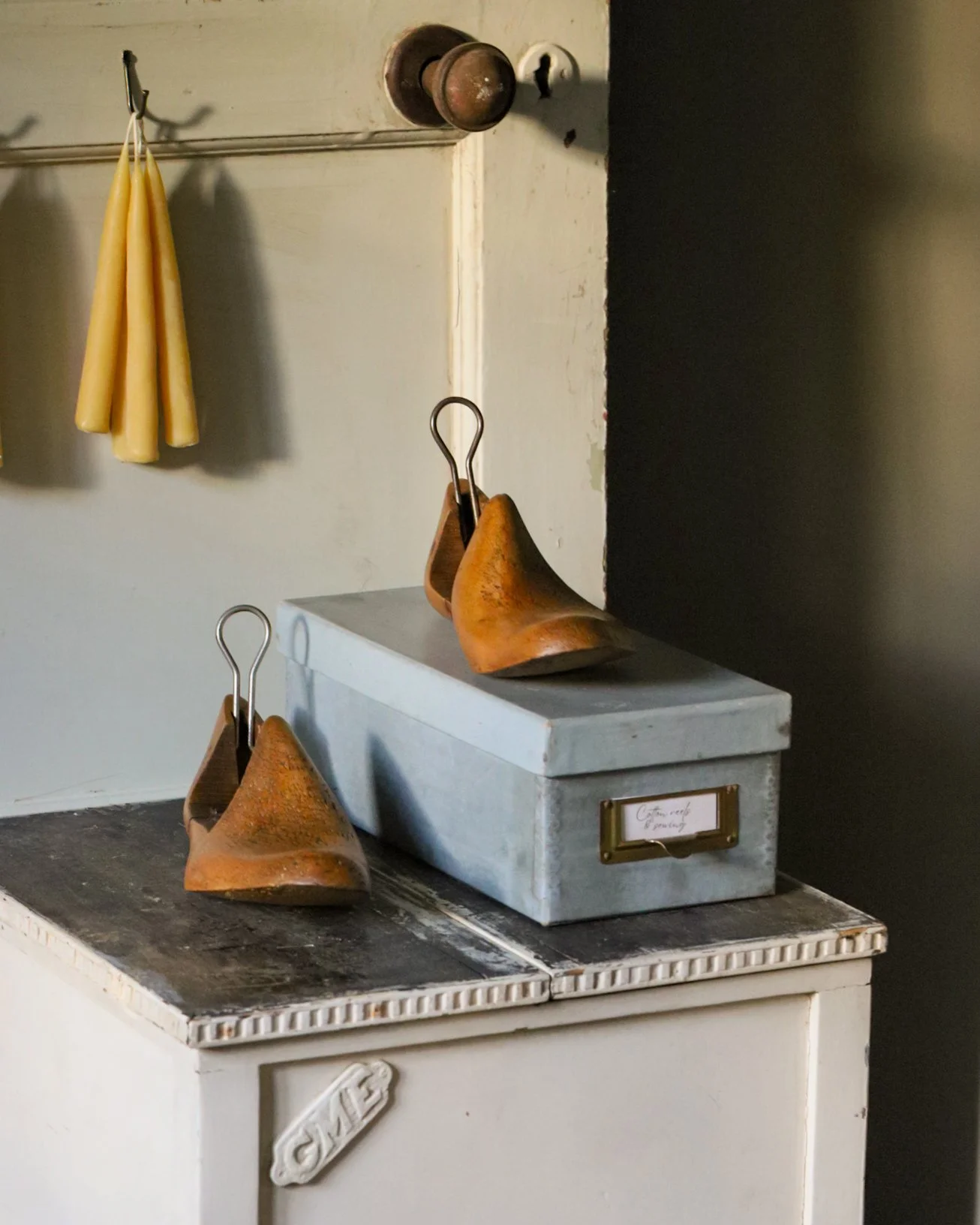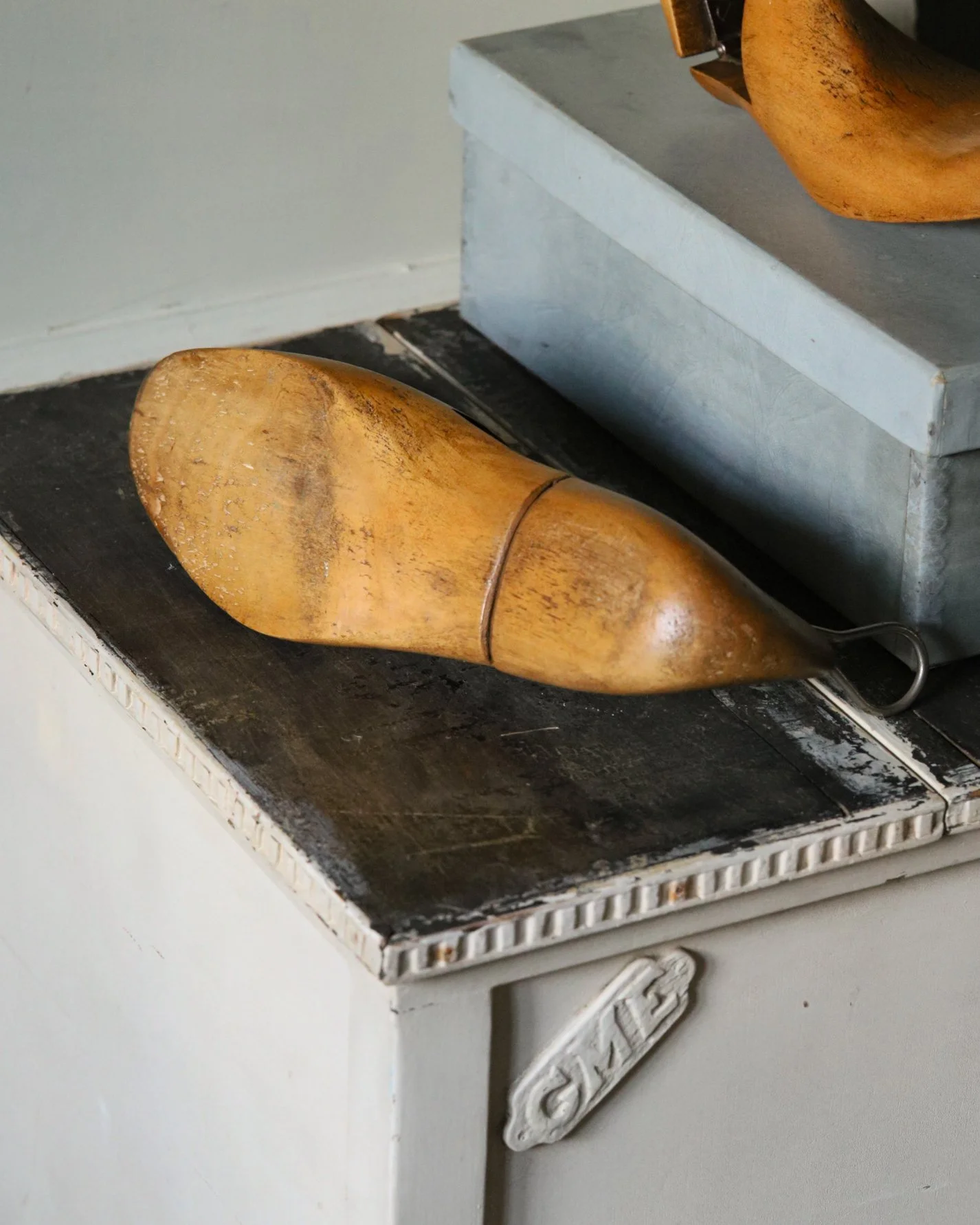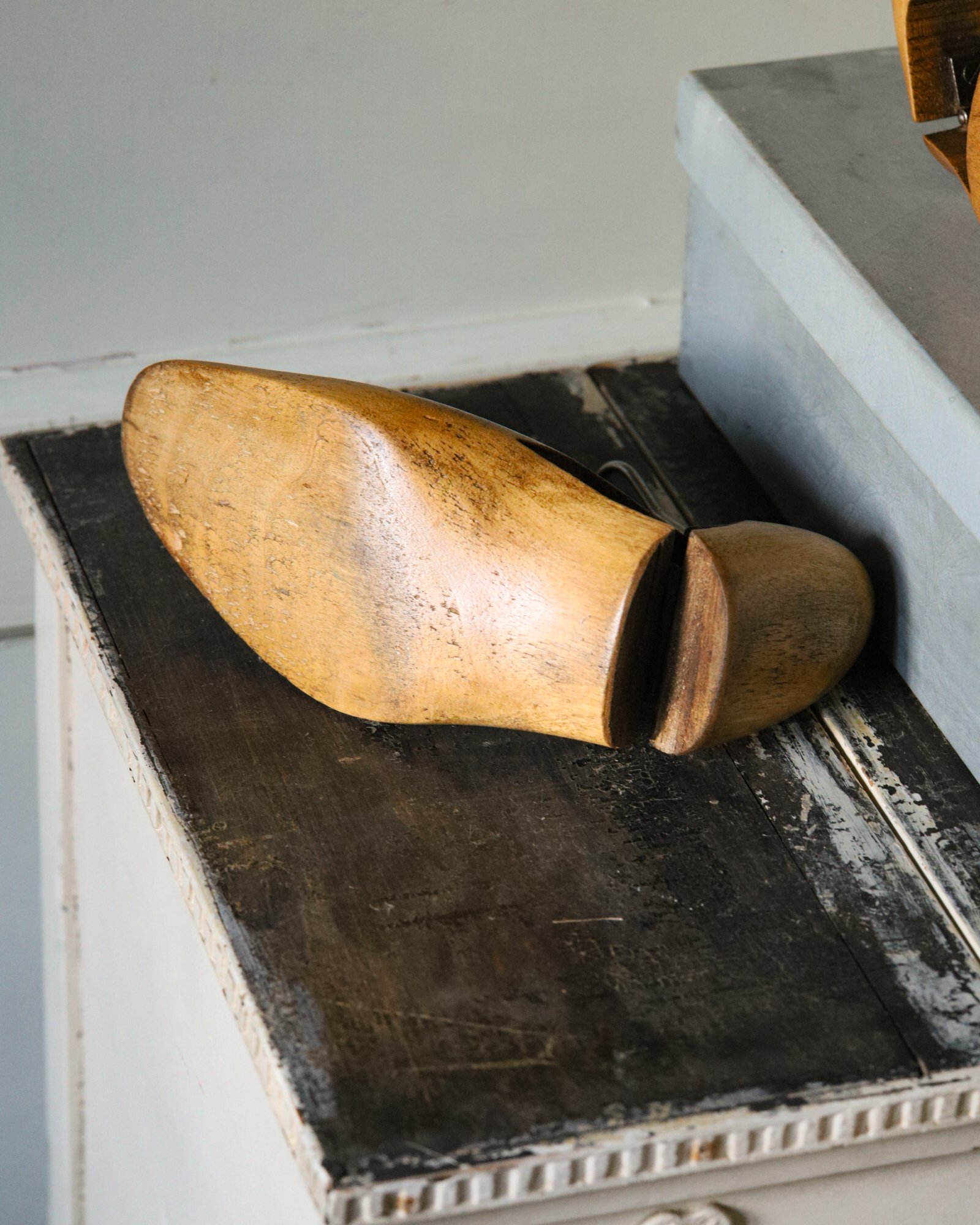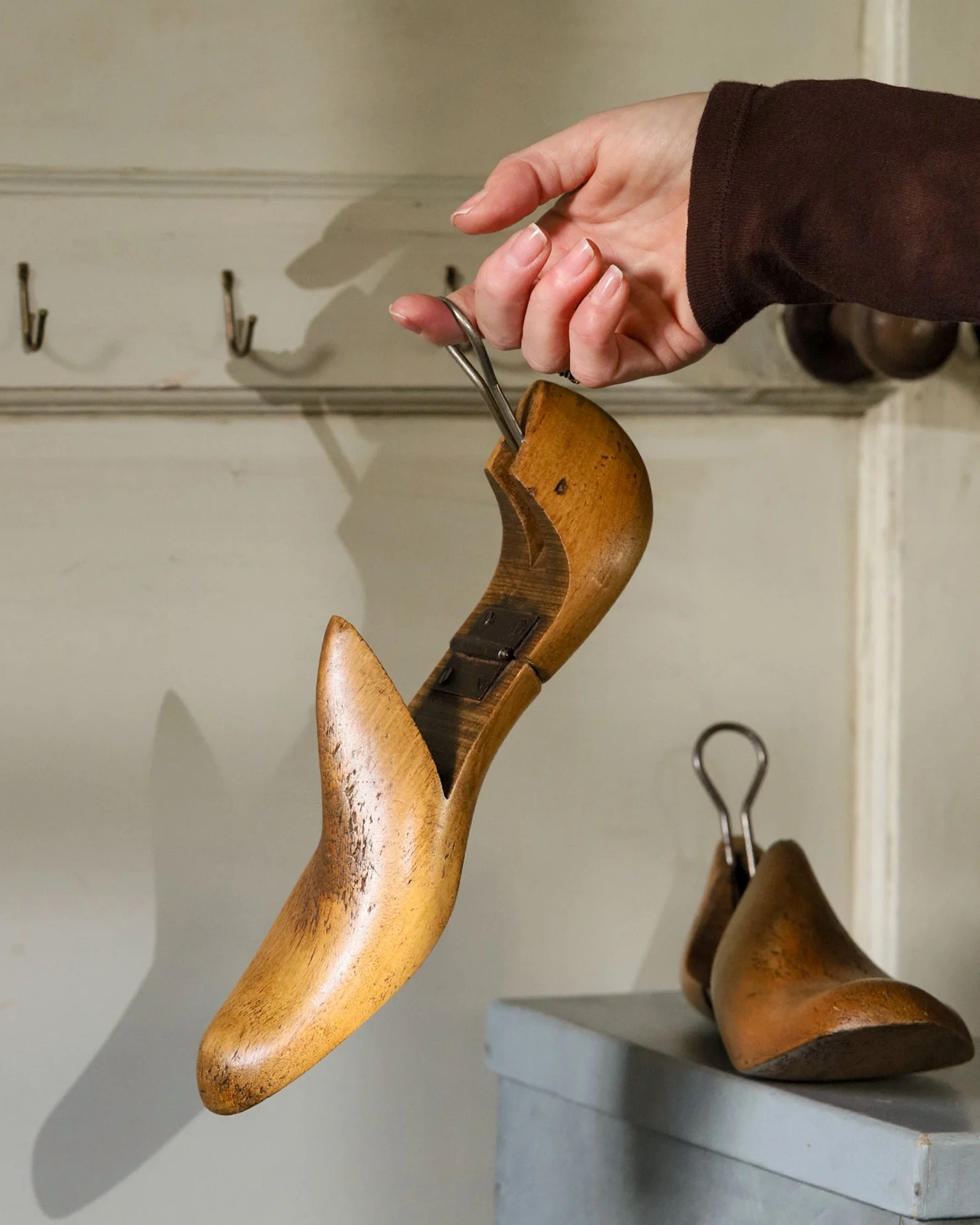A matched pair of circa 19th-century hinged shoemaker’s lasts, fashioned in finely grained beech wood with an amber-toned surface showing characteristic signs of long use.
Each last comprises a solid forepart and a hinged heel section joined by an iron plate fixed with four flat-head screws. A swivelling metal loop passes through apertures on either side of the heel and serves as a locking mechanism for the hinge, enabling the heel portion to open for the removal of a finished shoe.
The precision of the hinge and loop design identifies these as professional workshop tools, rather than display pieces, typical of lasts produced in the major British shoemaking centres of Northamptonshire and Manchester. Their practical use in London cobbler’s shops during the Edwardian period is highly probable.
Significance:
These shoe lasts exemplify the transitional phase of early industrial shoemaking in Britain, retaining hand-crafted joinery while incorporating mechanical convenience through the loop-and-hinge mechanism. They reflect the professional standards of English bespoke footwear production in the decades preceding mass mechanisation.
Please read the additional information for dimensions.
A matched pair of circa 19th-century hinged shoemaker’s lasts, fashioned in finely grained beech wood with an amber-toned surface showing characteristic signs of long use.
Each last comprises a solid forepart and a hinged heel section joined by an iron plate fixed with four flat-head screws. A swivelling metal loop passes through apertures on either side of the heel and serves as a locking mechanism for the hinge, enabling the heel portion to open for the removal of a finished shoe.
The precision of the hinge and loop design identifies these as professional workshop tools, rather than display pieces, typical of lasts produced in the major British shoemaking centres of Northamptonshire and Manchester. Their practical use in London cobbler’s shops during the Edwardian period is highly probable.
Significance:
These shoe lasts exemplify the transitional phase of early industrial shoemaking in Britain, retaining hand-crafted joinery while incorporating mechanical convenience through the loop-and-hinge mechanism. They reflect the professional standards of English bespoke footwear production in the decades preceding mass mechanisation.
Please read the additional information for dimensions.







